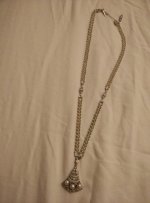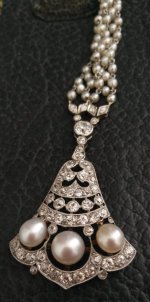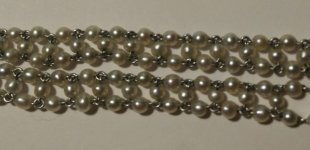So I took this other necklace (gifted by my mother) to a local gemmologist for an appraisal. I already had a gemmological description from the 1980s stating that the necklace contains 296 off round lightly spotted 2-2.5 mm natural pearls.
I was also hoping the gemmologist could refer me to a stringer experienced with small natural pearls to take care of my other antique natural pearl necklace.
I was surprised by the following things the gemmologist said and I wondered what other people think of them.
1) The gemmologist said that she was 100% sure the pearls in the necklace were natural but they were not unusual, not hard to obtain today, and not worth much.
2) She said the pearls were keshi pearls. She even wrote that they are keshi pearls in the report that she signed and stamped.
I thought that natural pearls were rare and that keshi pearls were by-products of culturing whereas these older natural pearls were not. Was I wrong?
On a separate note, she said her mom could restring my triple graduated natural pearl necklace I pictured in the other thread and she could match the "keshi" pearls to lengthen it without any problems.
Thanks for any insights.
I was also hoping the gemmologist could refer me to a stringer experienced with small natural pearls to take care of my other antique natural pearl necklace.
I was surprised by the following things the gemmologist said and I wondered what other people think of them.
1) The gemmologist said that she was 100% sure the pearls in the necklace were natural but they were not unusual, not hard to obtain today, and not worth much.
2) She said the pearls were keshi pearls. She even wrote that they are keshi pearls in the report that she signed and stamped.
I thought that natural pearls were rare and that keshi pearls were by-products of culturing whereas these older natural pearls were not. Was I wrong?
On a separate note, she said her mom could restring my triple graduated natural pearl necklace I pictured in the other thread and she could match the "keshi" pearls to lengthen it without any problems.
Thanks for any insights.



